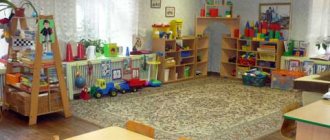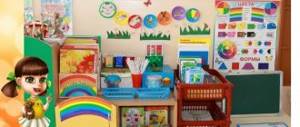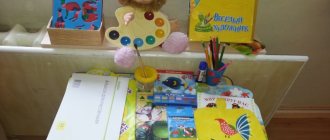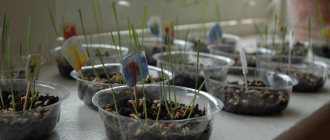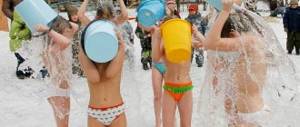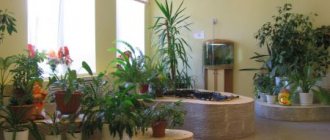Musical subject-development environment of preschool educational institutions
Musical subject-development environment of preschool educational institutions
It is known that the musical development of a child is determined not only by classes with a teacher, but also by the opportunity to play independently, experiment with musical toys, and freely engage in creative music-making. Independent creative activity of a child is possible provided that a special subject-development environment is created. A well-organized musical environment helps to maintain children's emotional well-being and their aesthetic development. Of great importance for the development of children's independence and initiative in musical activities are equipment and aids that are successfully used by children in their independent and specially organized musical and creative manifestations. The subject environment should be maximally provided with a variety of musical and didactic materials. When creating a subject-developmental environment, it is necessary to take into account the gender and age characteristics of preschoolers. It is desirable that children take part in the design and transformation of the subject-development environment in the group, and the teacher quietly and wisely directs the activity of his pupils.
The development of children's creativity largely depends on the equipment and its attractiveness. What is needed is originality, simplicity, attractiveness, accessibility, as well as a sufficient range of tools, teaching aids, demonstration material, attributes, etc.
It is advisable to have various musical toys and aids that children can carry to play in other places (for example, in the locker room or bedroom). And for independent musical activities while walking, it is advisable to make “pyramids” and “cubes”.
Musical pyramids are made of thick cardboard and covered with self-adhesive colored paper, a hole is cut out on one side, inside the pyramid there are noise instruments (maracas, wooden sticks, etc.), and plastic hooks are glued to the sides, which hold: a small metallophone, bells , bells, tambourine, etc. Musical cubes are made in the same way.
To store a noise orchestra, you can use “musical baskets” or “musical baskets”. They are very comfortable for walking. They can be used to carry noise instruments, handkerchiefs, and ribbons for impromptu dances on the site. Baskets are decorated depending on the time of year (spring basket, winter, summer or autumn).
One of the conditions for the successful musical development of a preschooler is the presence of a variety of didactic material in group music corners. With its help, it is possible to solve a variety of developmental and educational tasks in a playful form accessible to a preschooler (for example, developing a sense of rhythm, timbre, dynamic hearing, etc.). The pedagogical value of musical and didactic games lies in the fact that they open up a way for the child to apply the acquired knowledge and skills in everyday life. Musical and didactic games should be varied in content and colorfully designed, then they will attract the attention of children, make them want to sing and listen to music.
In order for children to constantly maintain interest in independent musical activities, it is necessary to update the manuals in the music corner from time to time (1-2 times a month) and introduce new equipment.
An environment created “according to the laws of beauty” promotes children’s understanding of beauty, the development of their artistic taste and aesthetic attitude towards the environment, and the development of creative abilities. Such an environment evokes in children a feeling of joy and delight, creates an emotionally positive attitude towards children, the children's institution, and a desire to visit it.
The development of children's musical creativity requires a large number of visual aids, attributes and equipment. The parents of our students help us make them. Children experience the pleasure of creating together with their parents and gain self-confidence. Thus, the kindergarten becomes a kind of “bridge of creativity,” a cultural center for both children and their families.
When creating musical zones in
a preschool educational institution , it is recommended to consider:
1. The feasibility of placing the zone, accessibility of equipment for children, storage.
2.Variety of equipment.
3. Taking into account the age characteristics of children.
4. Aesthetic design of the music area and aids located there.
5. Possibility of moving equipment to other places.
Classification of equipment for music zones
:
1. Material for creative role-playing games - soft toys, illustrations, fake musical instruments, lotto-type aids, etc. (fake musical toys are intended to create a play situation in which children, imagining themselves, imagine themselves as musicians.
2.Children's musical toys and instruments for creative music-making:
· with a chromatic series, diatonic pentatonic series (piano, metallophone, accordion, flute, etc.);
· with a fixed melody (organs, organs);
· with one fixed sound (pipes):
· noise (tambourines, rattles, drums, maracas, etc.)
3.Musical-didactic games and aids: music lotto, stave, ladder, geometric figures for symbolically designating parts of a work, etc. These aids are used for the development of sensory musical abilities, familiarization with the elements of note literacy (most often according to the manual “Musical primer").
4. Audiovisual aids: transparencies, CDs, phonograms, audio and video cassettes, video discs).
Approximate content of music zones by age groups
List of materials for children from 2.5 to 4 years old (1st and 2nd junior groups):
•Lefty dolls;
• shaped musical “singing” or “dancing” toys (cockerel, cat, bunny, etc.);
•toys-instruments with a fixed sound - organs, organs;
• toys-instruments with a sound of indefinite pitch: rattles, bells, tambourine, drum;
• a set of unvoiced figurative instruments (accordions, pipes, balalaikas, etc.);
• attributes for musical outdoor games;
•flags, plumes, scarves, bright ribbons with rings, rattles, autumn leaves, snowflakes, etc. for children's dance creativity (by season);
•table screen with glove toys;
•tape recorder and a set of software audio recordings;
•singing and moving toys;
•musical pictures for songs, which can be made on a cube and in the form of a large album or individual colorful illustrations.
List of materials for children 4-5 years old (middle group kindergarten):
In the music area for independent activities of children 4-5 years old, it is advisable to have manuals for the younger group (listed above), as well as additionally:
•glockenspiel;
•noise instruments for children's orchestra;
•little books “We Sing” (they contain bright illustrations for familiar songs);
•flannelograph or magnetic board;
•musical and didactic games: “Three Bears”, “Recognize and Name”, “In the Forest”, “Our Orchestra”, “Seven-Flower Flower”, “Guess the Bell”, etc.;
• attributes for outdoor musical games: “Cat and Kittens”, “Hen and Cockerel”. “Hares and the Bear”, “Pilots”, etc.;
•musical ladders (three-step and five-step), on which there are small and large birds or a small and large nesting doll;
•ribbons, colored scarves, bright plumes, etc. (attributes to dance improvisations for the season;
•table screen and set of toys;
•musical toys (sounding and noise) for creative music-making:
• tape recorder and a set of software audio recordings.
List of materials for children 5-6 years old (senior kindergarten group):
In addition to the middle group materials, the following is used:
• rattles, tambourines, drums, triangles, etc.;
•musical toys-instruments with diatonic and chromatic sound (metallophone, piano, button accordion, accordion, flute);
Get full text
•illustrations on the theme “Seasons”;
•homemade musical toys (noise orchestra);
•portraits of composers;
•illustrations from the “Musical ABC Book”;
•musical and didactic games: “Bee”. “Musical Lotto”, “Recognized and Named”, “Steps”, “Repeat the Sounds”, “The Three Little Pigs”, “Magic Top”, “Musical Train”, “Guess What Sounds”, etc.;
• attributes for outdoor games (“Round dance in the forest”, “Raven”, “Cat and Mice”, etc.);
• children's drawings for songs and familiar pieces of music;
•screens: tabletop and screen according to children’s height;
•musical ladders of three, five and seven steps - voiced;
• attributes for children's dance creativity: elements of costumes for familiar folk dances;
•multi-colored feathers, multi-colored gloves for musical improvisations behind a screen and other attributes;
•attributes for dance improvisations according to the season - leaves, snowflakes, flowers, etc.):
• tape recorder and a set of software audio recordings or discs.
List of materials for children 6-7 years old (preparatory group of kindergarten):
•musical instruments (maracas, tambourines, harp, children's piano, metallophone, bells, triangles, flutes, drums, etc.);
•portraits of composers;
•illustrations on the theme “Seasons”;
•pictures for the manual “Musical ABC Book”;
•albums: “We draw a song” or “We draw and sing” with children’s drawings, in which they reflect their emotions and feelings about the pieces of music they listened to and their favorite songs;
•graphic aid “Emotions” (cards depicting faces with different emotional moods) to determine the nature of the melody when listening to works;
•albums for consideration: “Symphony Orchestra”, “Folk Instruments”, “Dances of the Peoples of the World”, etc.;
•musical ladders (three-, five- and seven-step - voiced);
•a set of homemade instruments for a noise orchestra;
•musical and didactic games: “Three Little Pigs”, “Three Flowers”, “Musical Umbrella”, “Ri”, “Rhythmic Cubes”, “Name the Music Composer”, “Funny Record”, “Musical Chicks”, etc.;
attributes for outdoor games (for example, “Hello, autumn”, “Cosmonauts”, etc.);
• attributes for children's dance creativity, elements of costumes for familiar folk dances (kerchiefs, wreaths, hats) and attributes for dance improvisations according to the season (leaves, snowflakes, flowers, etc.); multi-colored gloves, plumes, gauze or scarves, multi-colored ribbons, multi-colored feathers for music and dance improvisations;
• tape recorder and a set of software audio recordings or discs.
